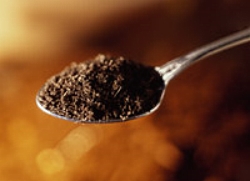
Courtesy King County, WA
The diversity and abundance of life that exists within soil is greater than in any other ecosystem. A ‘biological universe’ exists in a gram of soil. Soil biota within this tiny universe transform energy, create and modify their habitat, influence soil health, and aid in the regulation of greenhouse gases. There are more microbes in a teaspoon of soil than there are people on the earth. We’re talking such characters as bacteria, fungi, protozoa, nematodes, earthworms, and arthropods. No wonder kids are so drawn to this miraculous stew of life! My one year old granddaughter can’t resist a mouthful given the opportunity! So let’s dive into a handful of soil.

Courtesy USGS, Public Domain
https://www.usgs.gov/media/images/biogeochemical-cycling-diagram-showing-climatic-processes-hydrologic
Although we understand the vital services that these organisms provide by breaking down organic debris and recy¬cling nutrients, scientists have only begun to study the rich and unique diversity that is a part of the soil ecosystem. Of particular interest for myself is understanding the functions of certain fungi and their roles in storing atmospheric carbon dioxide.
As you may have heard in past WAU readings, climate change is a major threat to Utah’s wildlife including birds, cold water fish, pollinators, and pica.

Minimizing tillage and maintaining a crop residue on the soil surface can greatly reduce erosion impacts
Agricultural Management Practices for Water Quality Protection–Watershed Academy Web, Courtesy US EPA
Deploying what’s called regenerative agricultural practices like tillage reduction, cover crops, companion planting, planned grazing, and keyline plowing—will not only improve soil quality making it more resilient to climate conditions like flooding and drought, but also increase soil’s organic matter which require less fertilizer. This in turn, means less runoff into waterways and greater profitability for farmers.
Perhaps most important of all, managing farms this way actually draws carbon out of the atmosphere. If all cropland in the U.S. was farmed using these regenerative practices, the greenhouse gas reduction would be equivalent to eliminating nearly 90 percent of our country’s cars. And now some states are considering economic incentives like tax breaks for carbon sequestration farming, and enlisting Farm Bureaus to provide additional support. Will Utah be next?
This is Jack Greene writing and reading for Wild About Utah.
Fortuna, A. (2012) The Soil Biota. Nature Education Knowledge 3(10):1, https://www.nature.com/scitable/knowledge/library/the-soil-biota-84078125
Biogeochemical Cycles, U.S. Global Change Research Program, https://nca2014.globalchange.gov/report/sectors/biogeochemical-cycles#intro-section-2
How do microbial mats work? Microbial Mat Biogeochemical Cycling, NASA Ames Research Center, https://spacescience.arc.nasa.gov/microbes/about/microbial.html
Biogeochemical Cycling, Center for Forested Wetlands Research, Southern Research Station, USDA Forest Service, https://www.srs.fs.usda.gov/charleston/research/biogeochemical/
Subsurface Biogeochemical Research Program, Climate and Environmental Sciences Division, Office of Biological and Environmental Research, U.S. Department of Energy, https://doesbr.org/
The Carbon Cycle, NASA Earth Observatory, EOS Project Science Office, NASA Goddard Space Flight Center, https://earthobservatory.nasa.gov/Features/CarbonCycle/
